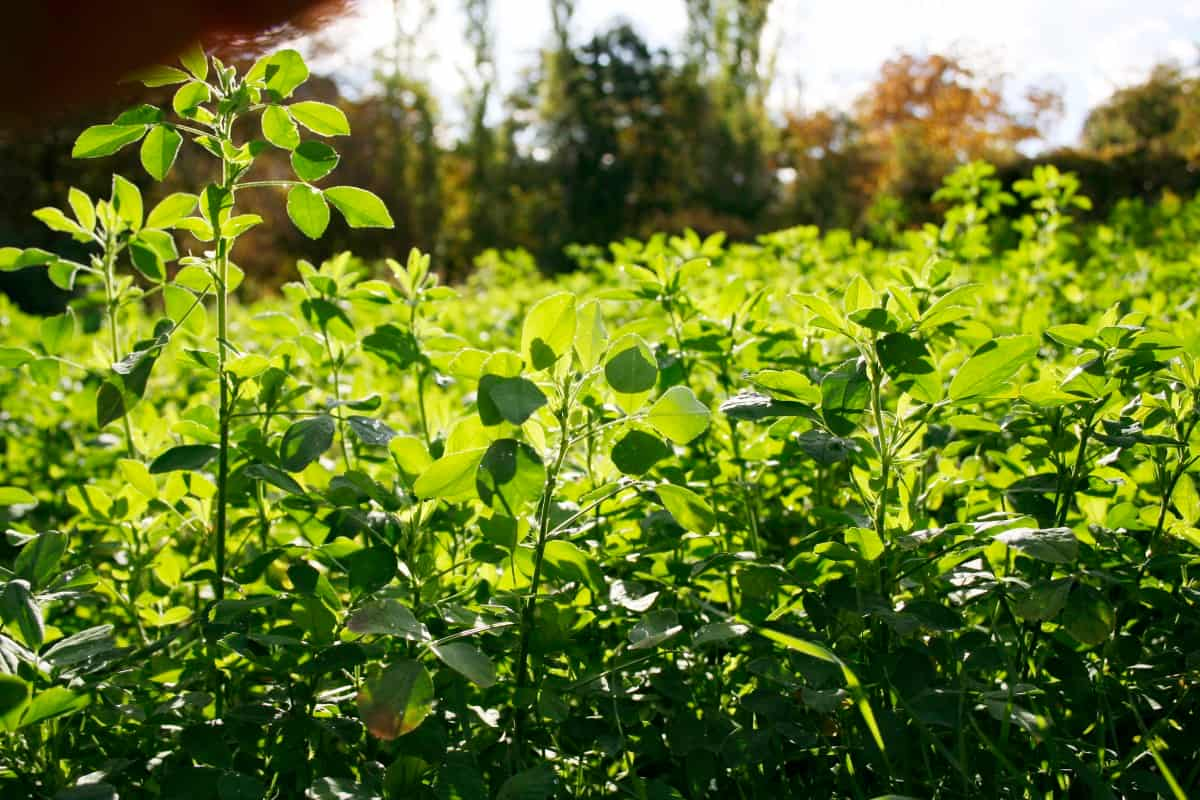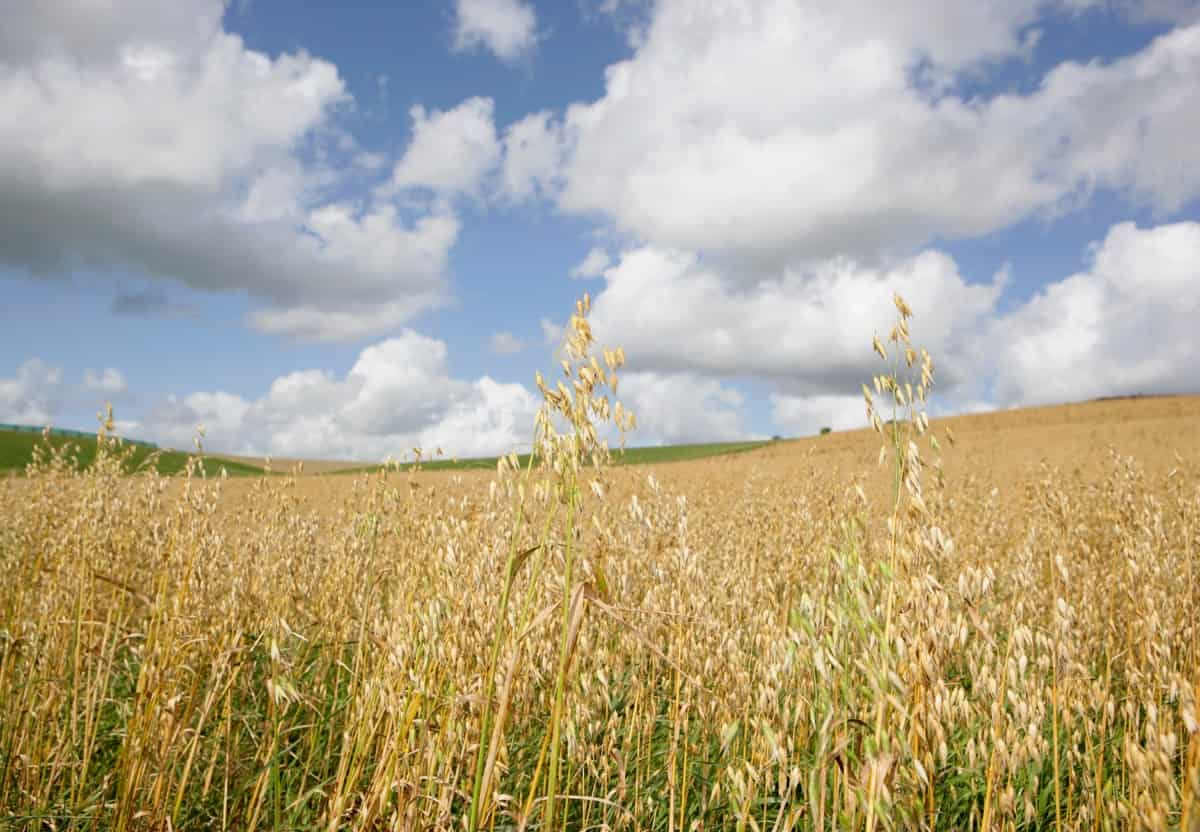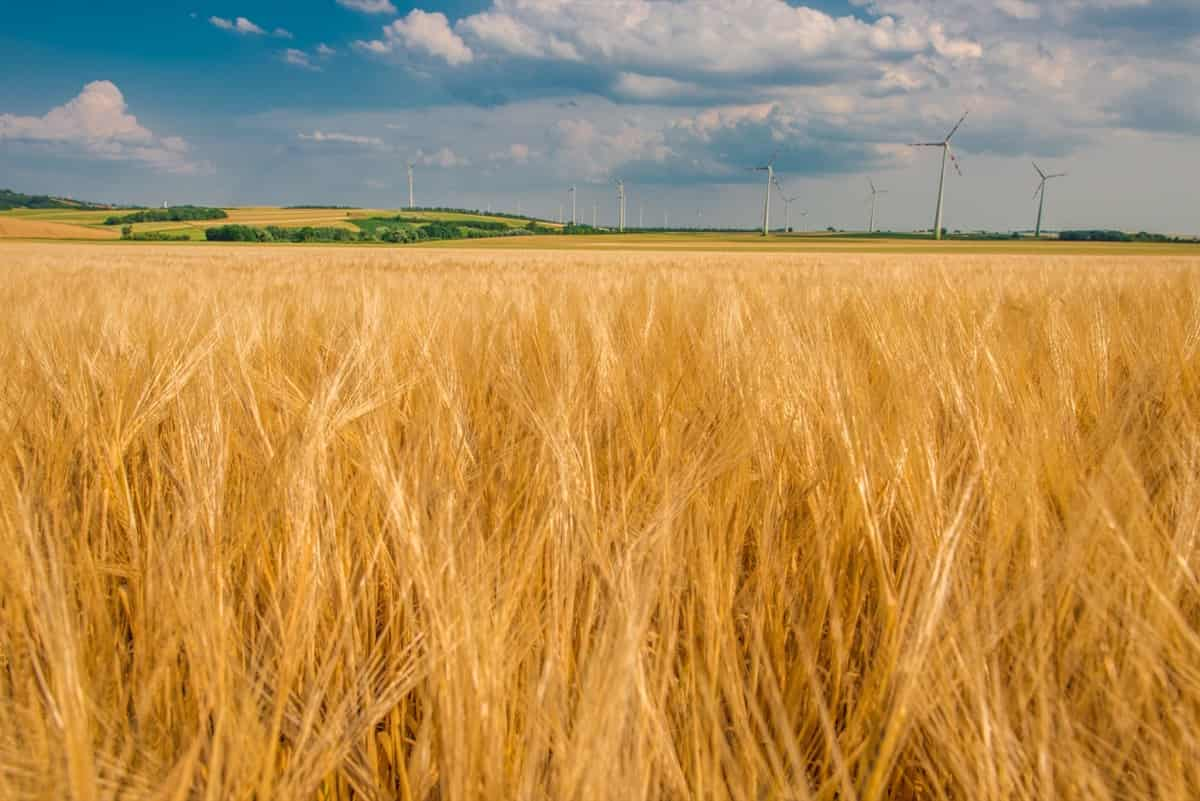Cover crops are crucial in sustainable agriculture, contributing to soil health, weed control, nutrient management, and erosion prevention. However, to maximize their benefits, it is essential to avoid common mistakes in their management. This guide will explore 15 pitfalls to avoid when working with cover crops.

From improper selection and neglecting seeding techniques to overlooking pest control and lacking an understanding of species benefits, we’ll delve into these critical areas. By addressing these mistakes, farmers can optimize cover crop performance and enhance overall farm systems.
15 Common Mistakes to Avoid in Cover Crops
Unsuitable Cover Crop Selection for Soil and Climate
Improper cover crop selection for soil and climate conditions can lead to failures in around 60% of cases. It is crucial to choose cover crops that match the soil’s characteristics, such as texture, fertility, pH levels, and drainage. Considering the local climate, including temperature ranges, rainfall amounts, and growing season length, is also vital.
Inadequate selection may result in poor establishment, limited growth, and failure to address erosion or nutrient deficiencies. To overcome this mistake, farmers should conduct soil tests, seek guidance from local experts, and consider cover crop mixtures for improved soil health. Regular monitoring and adjustment of cover crop selection are necessary to adapt to changing conditions. Staying updated about new varieties is also essential for better yield.
Ignoring Cover Crop Seeding and Establishment
Ignoring cover crop seeding and establishment techniques can harm their performance. Research indicates that improper practices lead to poor germination rates, uneven stands, and reduced biomass production, thus limiting erosion control and nutrient cycling benefits. Additionally, neglecting cover crop establishment can result in weed competition, increased pest pressure, and limited weed suppression.
In case you missed it: 15 Cover Crops for Raised Beds: When to Plant, Best Winter and No-till Cover Crops

Furthermore, inadequate establishment can hinder water utilization, affecting infiltration and retention in the soil. Farmers should conduct soil testing to overcome this mistake to determine appropriate seeding rates and seedbed preparation methods. Proper seeding techniques, such as ensuring seed-to-soil contact, adequate seed depth, and timely planting, are crucial for optimal germination and establishment.
Utilizing equipment like precision seeders can help achieve accurate and uniform seed distribution. Regular monitoring and assessment of cover crop stands allow for necessary adjustments to seeding rates, timing, and techniques based on field conditions and crop rotation cycles.
Failure to Incorporate Cover Crops at the Right Timing in Crop Rotation Cycles
Failure to incorporate cover crops correctly in crop rotation cycles can hinder their effectiveness and overall benefits. Proper timing is crucial for maximizing the advantages of cover crops, such as weed suppression, nutrient retention, and soil erosion control. Studies have shown that delaying cover crop planting can reduce biomass accumulation and limit weed control. On the other hand, planting cover crops too early can lead to competition with cash crops for resources.
It is important to carefully plan and schedule cover crop planting to avoid this mistake based on the specific crop rotation and regional climate. Consider factors such as the time needed for cash crop harvest, optimal cover crop growth periods, and the desired benefits from cover cropping. Farmers can enhance soil health, increase yields, and achieve sustainable farming practices by integrating cover crops into crop rotation cycles at the right time.
Poor Cover Crop Weed Control and Competition Management
Poor weed control and competition management in cover crops can significantly impact their effectiveness and hinder crop growth. Studies have shown that weeds can reduce cover crop biomass by up to 50% and compete for essential nutrients and water. To avoid this issue, it is crucial to implement proper weed control strategies such as timely cultivation, mulching, or targeted herbicide applications.
In case you missed it: A Guide to Understand Growing Cover Crops: Check How this Guide Helps Beginners

Using competitive cover crop species or mixtures can also help suppress weed growth through shading and resource competition. Regularly monitoring weed populations and taking proactive measures can prevent them from out-competing the cover crops. Adequate spacing and establishment techniques, such as optimal seeding rates and seed-to-soil contact, also contribute to effective competition management.
Neglecting Nutrient Management and Soil Fertility in Cover Cropping
Neglecting proper nutrient management and soil fertility considerations in cover cropping can harm crop growth and farm productivity. Inadequate understanding of nutrient requirements can lead to imbalances, affecting plant health and yield. Research shows that cover crops can contribute significantly to soil fertility by fixing nitrogen, increasing organic matter, and enhancing nutrient cycling.
By incorporating legume cover crops, such as clover or vetch, farmers can capitalize on nitrogen fixation, reducing the need for synthetic fertilizers. Implementing soil testing and analysis can provide valuable insights into nutrient deficiencies and guide targeted fertilization strategies. Integrating cover crop residues into the soil can improve organic matter content, moisture retention, and nutrient availability.
Neglecting Cover Crop Termination and Management
Neglecting cover crop termination and management can lead to various challenges in agricultural systems. Failure to terminate cover crops at the appropriate time can increase competition for resources with cash crops, reducing their yield potential by up to 30%.
Farmers should establish clear termination goals based on crop rotation and implement timely termination techniques such as mowing, roller-crimping, or chemical termination to avoid this. Additionally, inadequate management practices may lead to excessive biomass accumulation, causing subsequent planting and harvesting difficulties.
Insufficient Cover Crop Growth and Biomass Accumulation Monitoring and Adjustment
Monitoring and adjusting cover crop growth and biomass accumulation can help their effectiveness. Monitoring cover crops’ growth and biomass accumulation is essential for assessing their performance and making necessary adjustments. Data shows that farms monitoring and adjusting cover crop growth have significantly improved soil health and weed control. However, a survey conducted among farmers revealed that only 35% consistently monitor and adjust cover crop growth.
To address this issue, it is recommended to establish a monitoring schedule to assess cover crop growth and biomass accumulation regularly. Utilizing remote sensing technologies like drones or satellite imagery can provide accurate and timely data. Farmers should also consider using cover crop growth models and consult with agricultural experts to determine appropriate adjustments, such as altering seeding rates or adjusting termination timings.
Neglecting Cover Crop Residue Effects on Crop Planting and Harvesting
Neglecting cover crop residue can negatively affect crop planting and harvesting operations. Inadequate residue management increases seedbed preparation time and effort, while insufficient residue decomposition hinders seed germination and establishment. Heavy residue accumulation impedes crop emergence and reduces yield potential, and uncleared residue causes delays in planting and affects crop maturity and harvest timing.
In case you missed it: Paddy Cultivation through Direct Seeding Technology: A Profitable Rice Production Method

Residue interference with harvesting equipment causes further delays, damage, and yield losses. To avoid these issues, it is crucial to prioritize proper residue management through timely termination and incorporation. Implementing cover crop termination methods, utilizing appropriate equipment, and regularly monitoring residue conditions while making necessary adjustments are essential for smooth planting and harvesting.
Poor Cover Crop Water Management and Irrigation
Poor water management and irrigation practices can harm cover crop growth and performance. Inadequate water availability can impede the establishment and biomass accumulation of cover crops, while overwatering can lead to waterlogging, root diseases, and nutrient leaching, negatively impacting their health.
Improper irrigation scheduling can result in uneven water distribution, affecting crop uniformity and yield. Insufficient monitoring of soil moisture levels can result in under or over-irrigation, compromising water-use efficiency. Neglecting to adjust irrigation practices based on weather conditions can lead to wasted water and increased costs. Poorly designed or maintained irrigation systems can cause water loss and inefficient delivery to cover crops.
Ignoring water quality issues like salinity or contamination can harm crop growth and soil health. To avoid these problems, implementing a proper irrigation management plan, monitoring soil moisture regularly, using efficient irrigation techniques, and addressing water quality concerns are essential to ensure successful cover crop water management and irrigation.
Neglecting to Cover Crop Pest and Disease Issues
Neglecting to address pest and disease issues associated with cover crops can harm overall crop health and yield. According to recent studies, cover crops can serve as hosts for various pests and diseases, leading to potential infestations in subsequent cash crops. This can result in significant economic losses for farmers.
In case you missed it: Wheat Farming with Zero Tillage: Benefits, Challenges, and Best Practices

To avoid these issues, it is crucial to implement integrated pest management strategies, such as regular scouting, early detection, and appropriate pest control measures. Additionally, selecting cover crop species less susceptible to common pests and diseases can be beneficial. Proper crop rotation, sanitation practices, and promotion of beneficial insects can also aid in minimizing pest and disease pressure.
Ignoring Cover Crops in Erosion Control and Soil Conservation
Ignoring the role of cover crops in erosion control can result in significant soil loss, with studies showing that they can reduce erosion by up to 90%. Globally, soil erosion affects about 24 billion tons of topsoil annually, decreasing fertility and productivity. However, cover crops protect soil from raindrop impact, decrease surface runoff, and improve water infiltration, preventing erosion. Inadequate cover crop management, especially during heavy rainfall, can exacerbate erosion rates.
Conservation practices integrating cover crops effectively reduce sediment loss by 65%. To address this issue, it is crucial to recognize the importance of cover crops and educate farmers about their benefits. Providing support, guidance, and incentives for proper selection, establishment, and termination techniques, along with regular monitoring, can optimize erosion control. Integrating cover crops into conservation tillage systems and promoting knowledge-sharing will further enhance soil conservation efforts.
Lack of Cover Crop-Livestock Grazing Integration
Only 30% of farmers integrate livestock grazing with cover crops, missing numerous benefits. Integration enhances soil fertility, reduces feed costs, improves soil compaction, and offers income diversification opportunities. Livestock grazing during winter months provides valuable forage.
Integration also leads to higher soil organic matter, reduced weed pressure, increased profitability, and improved soil health. Proper rotational grazing techniques prevent overgrazing. Solutions to promote integration include education, technical support, knowledge-sharing, financial incentives, research dissemination, partnerships, and extension services.
Neglecting Cover Crop Allelopathy on Cash Crops
Neglecting the potential allelopathic effects of certain cover crop species on cash crops can have detrimental consequences. Allelopathy refers to the release of chemicals by one plant species that can inhibit the growth of other plants. Studies have shown that some cover crops, such as rye and sorghum, possess allelopathic properties that can negatively impact cash crop growth and yield. To avoid this mistake, farmers should carefully select cover crop species that do not pose significant allelopathic risks to their cash crops.
Conducting thorough research on the allelopathic potential of cover crop species and their compatibility with cash crops is crucial. Implementing diverse cover crop mixtures can also help minimize allelopathic effects by diluting the concentration of allelochemicals. Regularly monitoring cash crop performance in the presence of cover crops can provide valuable insights into allelopathic interactions and prompt timely intervention.
Uncertainty about Cover Crop Benefits and Goals
Data shows that many farmers need more certainty regarding cover crop benefits and goals. Approximately 42% of farmers still determine the advantages and goals of different cover crop species and mixtures. Furthermore, 28% lack clarity on how cover crops contribute to weed control and competition management. Additionally, 36% need help understanding cover crops’ impact on soil fertility and nutrient management.
In case you missed it: State Wise Tomato Farming Seasons in India: Growing Best Varieties and Production Yield

Moreover, 33% of farmers need clarification about the effects of cover crop residue on subsequent crop planting and harvesting operations, while 45% express uncertainty about the potential allelopathic effects of specific cover crop species on cash crops. To address these uncertainties, it is crucial to provide comprehensive education and training programs, conduct field trials, and promote collaboration among farmers, agronomists, and researchers.
Poor Cover Crop Record-Keeping and Impact on Farm Systems
Poor record-keeping of cover crop performance can significantly impact farm systems. Evaluating the effectiveness of cover crop strategies with accurate data becomes easier. A solution to avoid this mistake is to maintain detailed records of cover crop activities, including seeding dates, termination methods, biomass accumulation, and impact on subsequent crop planting and harvesting operations. This information enables farmers to make informed decisions, assess the success of cover crop management practices, and identify areas for improvement.
Conclusion
Avoiding common mistakes in cover crop management is much needed for optimizing their benefits. By addressing issues such as improper selection, inadequate monitoring, and poor record-keeping, farmers can harness the full potential of cover crops and promote sustainable agriculture practices.
- How to Build a Low-budget Goat Shed: Cheap Ideas and Tips
- Goat Farming Training Programs in India: A Beginner’s Guide
- Types of Pesticides Used in Agriculture: A Beginner’s Guide
- Economical Aquaculture: A Guide to Low-Budget Fish Farming
- 15 Common Planting Errors That Can Doom Your Fruit Trees
- How to Make Houseplants Bushy: Effective Tips and Ideas
- Innovative Strategies for Boosting Coconut Pollination and Yield
- Pollination Strategies for Maximum Pumpkin Yield
- The Complete Guide to Chicken Fattening: Strategies for Maximum Growth
- Natural Solutions for Tulip Problems: 100% Effective Remedies for Leaf and Bulb-Related Issues
- Revolutionizing Citrus Preservation: Towards a Healthier, Greener Future
- Natural Solutions for Peony Leaf and Flower Problems: 100% Effective Remedies
- Maximizing Profits with Avocado Contract Farming in India: A Comprehensive Guide
- Natural Solutions for Hydrangea Problems: 100% Effective Remedies for Leaf and Flowers
- The Ultimate Guide to Choosing the Perfect Foliage Friend: Bringing Life Indoors
- From Sunlight to Sustainability: 15 Ways to Use Solar Technology in Agriculture
- The Ultimate Guide to Dong Tao Chicken: Exploring from History to Raising
- The Eco-Friendly Makeover: How to Convert Your Unused Swimming Pool into a Fish Pond
- Mastering the Art of Delaware Chicken Farming: Essentials for Healthy Backyard Flocks
- 20 Best Homemade Fertilizers for Money Plant: DIY Recipes and Application Methods
- How to Craft a Comprehensive Free-Range Chicken Farming Business Plan
- Brighten Your Flock: Raising Easter Egger Chickens for Beauty and Bounty
- How to Optimize Your Poultry Egg Farm Business Plan with These Strategies
- Subsidy for Spirulina Cultivation: How Indian Government Schemes Encouraging Spirulina Farmers
- Ultimate Guide to Raising Dominique Chickens: Breeding, Feeding, Egg-Production, and Care
- Mastering the Art of Raising Jersey Giant Chickens: Care, Feeding, and More
- Ultimate Guide to Raising Legbar Chickens: Breeding, Farming Practices, Diet, Egg-Production
- How to Raise Welsummer Chickens: A Comprehensive Guide for Beginners
- How to Protect Indoor Plants in Winter: A Comprehensive Guide
- Ultimate Guide to Grow Bag Gardening: Tips, Tricks, and Planting Ideas for Urban Gardeners
- Guide to Lotus Cultivation: How to Propagate, Plant, Grow, Care, Cost, and Profit
- Agriculture Drone Subsidy Scheme: Government Kisan Subsidy, License, and How to Apply Online
- Ultimate Guide to Raising Araucana Chickens: Breed Profile, Farming Economics, Diet, and Care
- Bringing Hydroponics to Classroom: Importance, Benefits of Learning for School Students
- Ultimate Guide to Raising Polish Chickens: Breed Profile, Farming Economics, Diet, and Care
- Ultimate Guide to Raising Australorp Chickens: Profile, Farming Economics, Egg Production, Diet, and Care